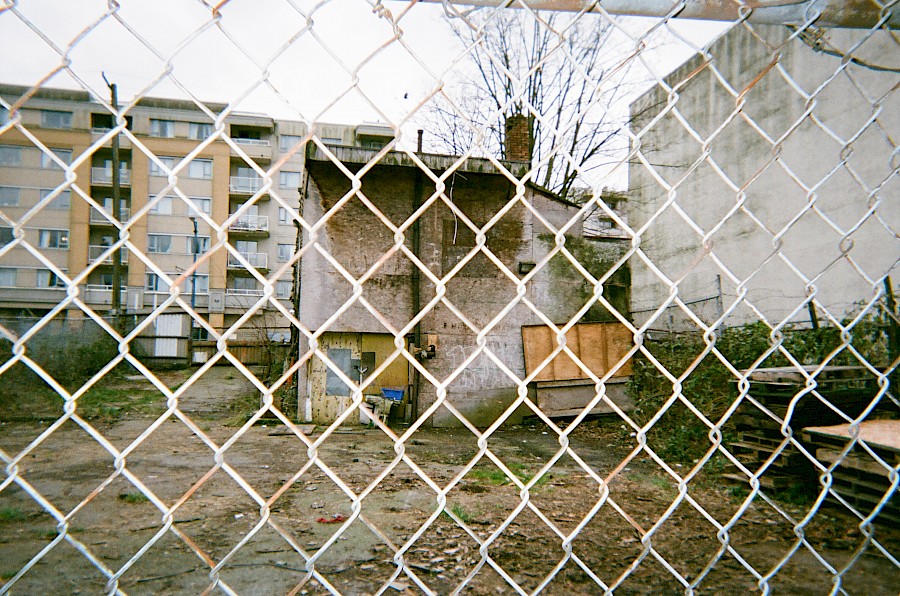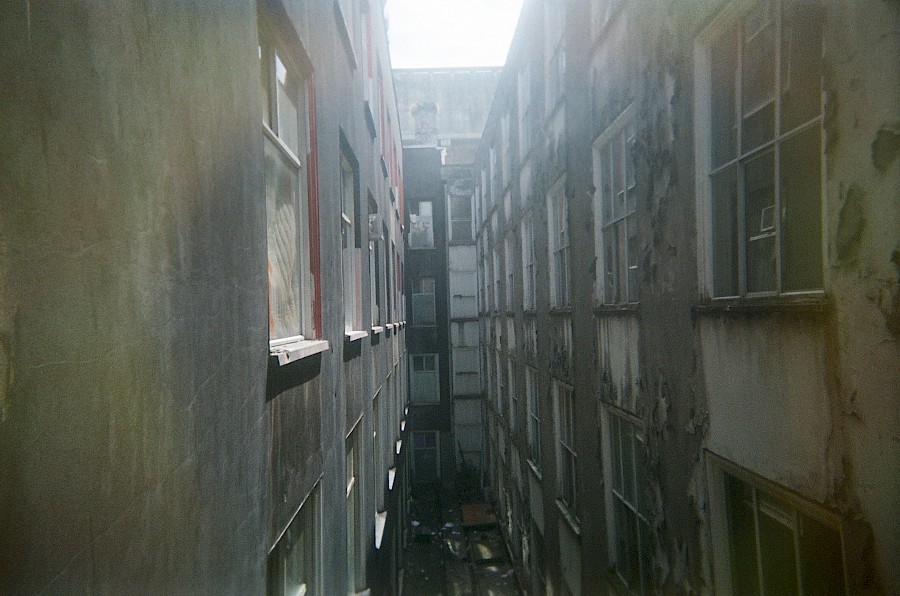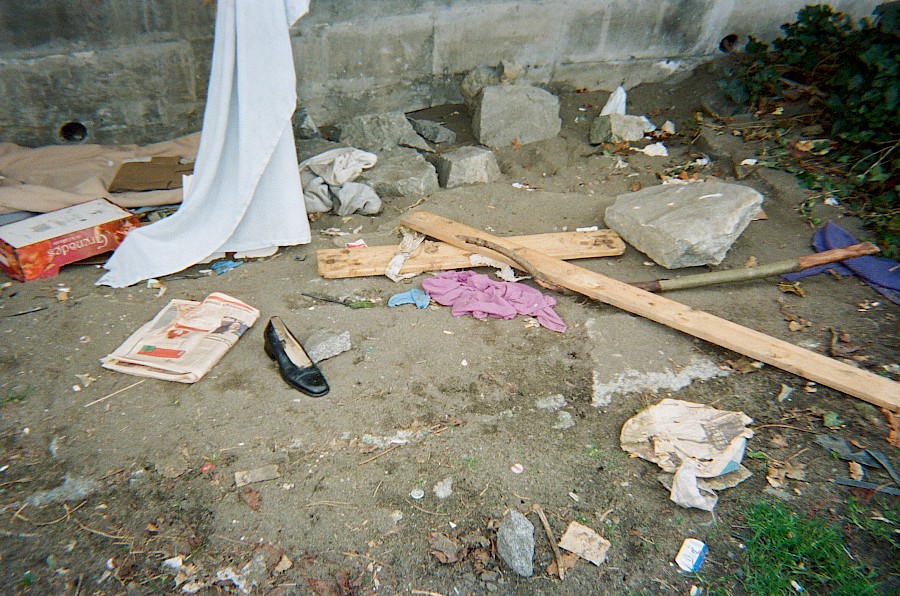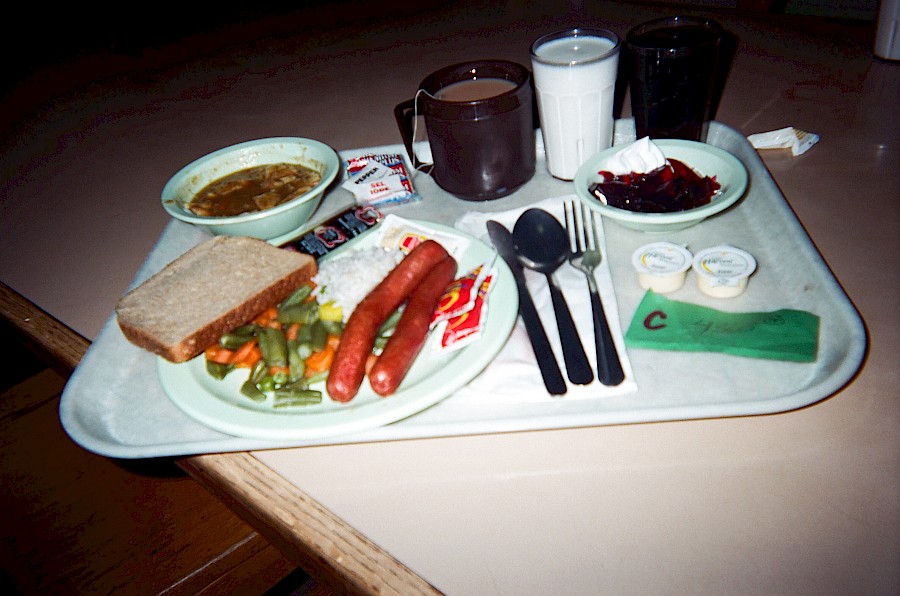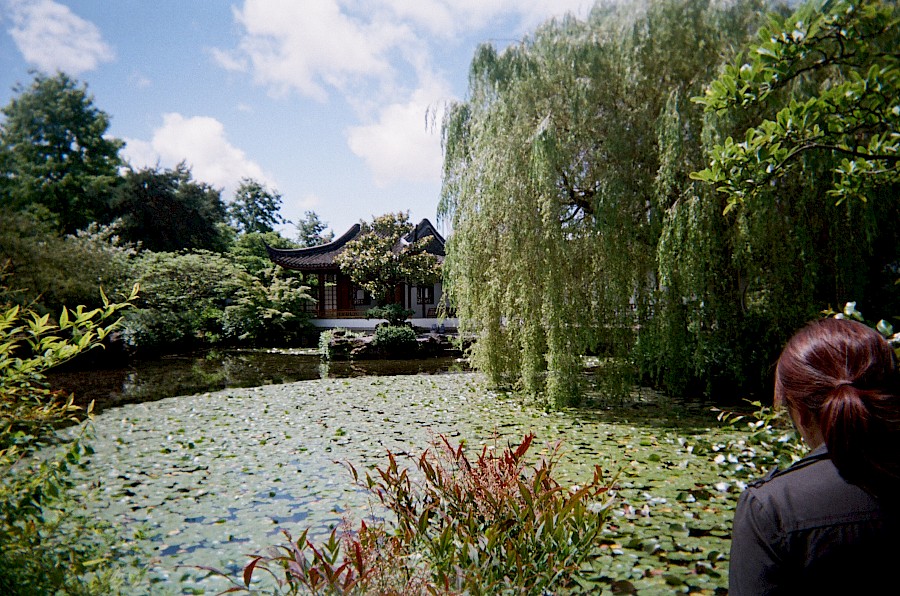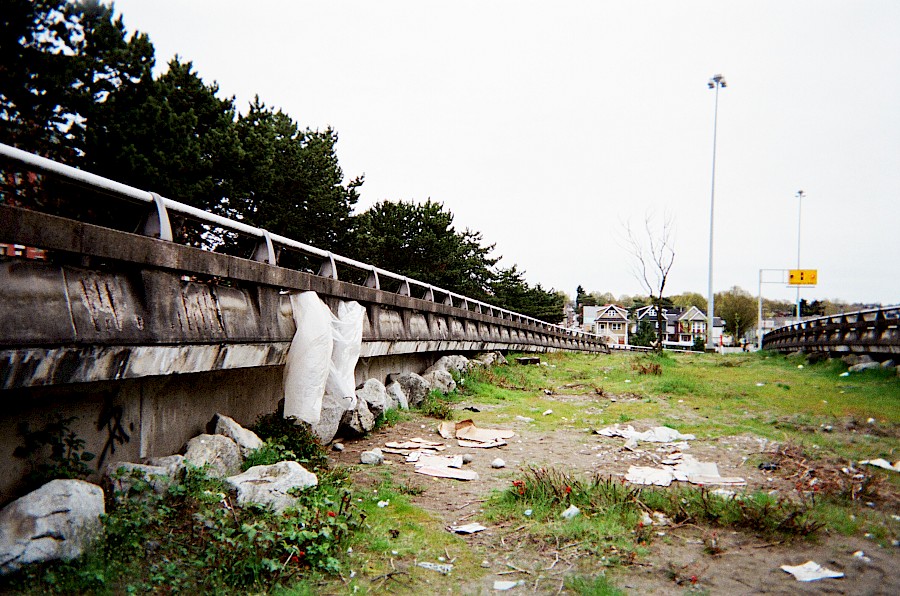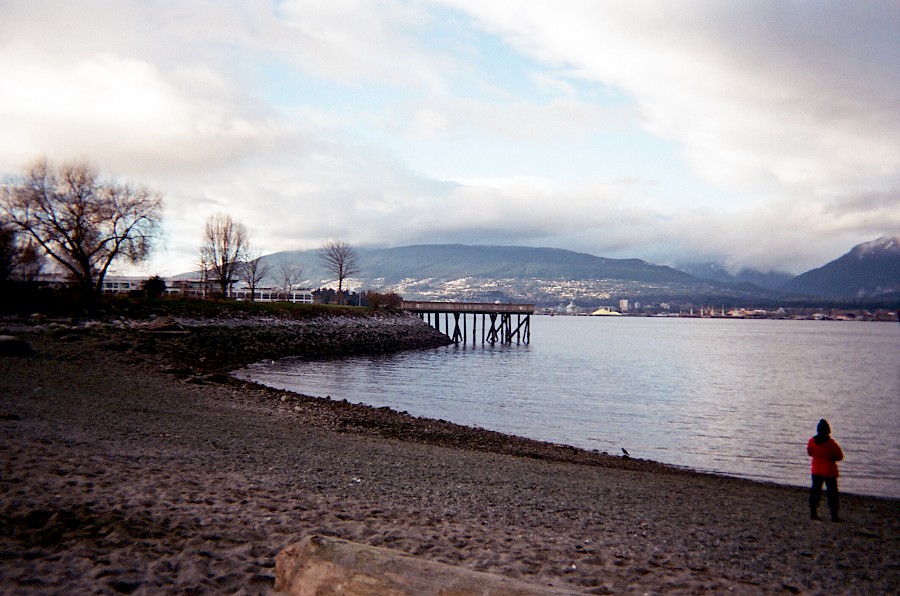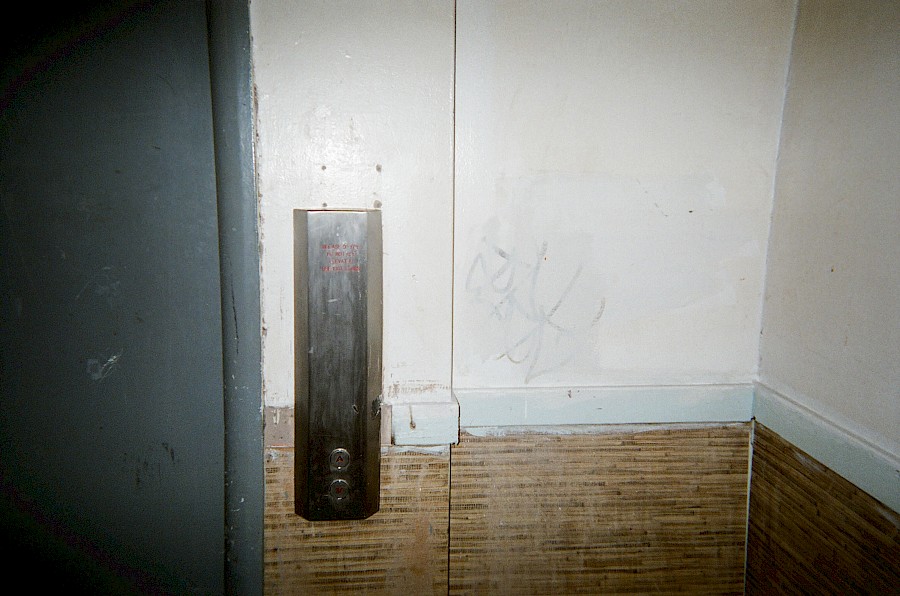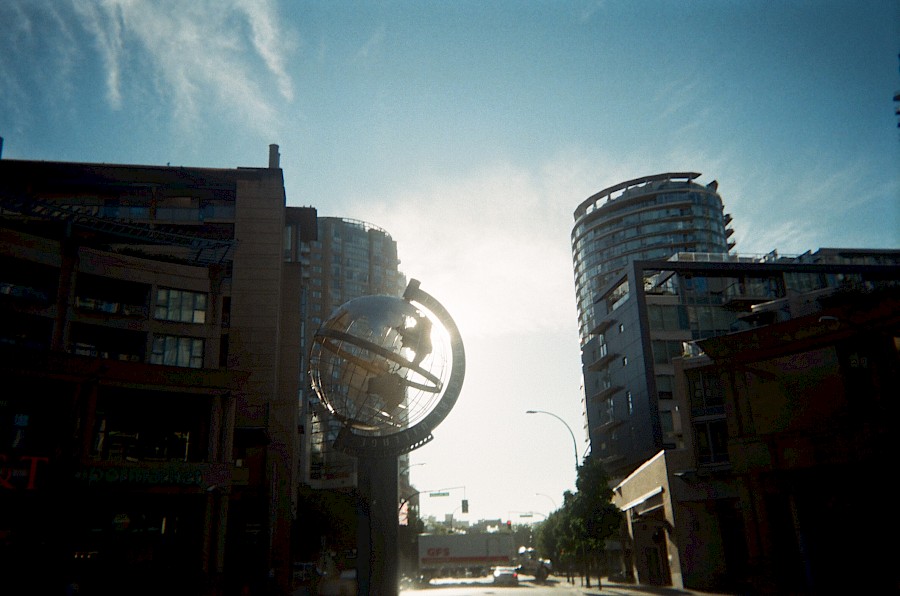Mapping senses of place in an urban drug scene
—
This photo essay is a collaboration between myself and one of the young people with whom I conduct research in Vancouver, Canada. Jordan (a pseudonym) was eighteen years old when he hitchhiked from Toronto to Vancouver in 2002. Once there, he told me, his addiction to heroin ‘completely took over’, and he became entrenched in the cycles of drug use, crime, and destitution that ‘trapped’ him in Vancouver’s Downtown Eastside. He and I met in 2008, when he was twenty-four years old. He took these photographs approximately four years later.
(click on images to see in ‘slideshow’ view)
It looked like it was going to rain as I waited for Jordan outside the entrance to his single room occupancy hotel (SRO) in the Downtown Eastside in the fall of 2012. He rarely invited me inside, and often referred to the building where he lived as a ‘shit hole’. When he finally emerged, he informed me there was a community garden he wanted to photograph, located several blocks away. This was a departure from our usual itineraries, since we rarely strayed more than a few blocks from his SRO and the handful of other places in the Downtown Eastside he went to on a daily basis.
As we walked east toward the garden, Jordan told me that he was several days ‘clean’ (off opiates). This included the prescription heroin he was receiving as part of a new drug trial. ‘I don’t want to be a drug addict’, he said flatly, in response to my questions about why he had quit the trial (rumor was that the waiting list was several hundred people long). ‘I don’t want to be labeled as that’, he continued, almost angrily. ‘As a junkie down here who’s going nowhere.’
Jordan was well known in the Downtown Eastside. Walking that day we exchanged greetings with nearly everyone we saw, Jordan stopping to make introductions when he felt like it. ‘I know everyone down here’, he grinned. ‘But I care what society sees me as. I don’t go to food lines, I don’t go to any shit like that. I eat at home. I buy my own food at a regular store.’ He looked at me, possibly assessing whether I was taking his statements seriously. Given the meager amount of his monthly social assistance payments, we both knew that this defiant rejection of Downtown Eastside services for the urban poor was more wishful thinking than something that could be easily enacted in reality.
As we arrived at the garden, Jordan decided to change the subject. He talked about how much he loved ‘normal stuff’ like flowers, gardening and ‘being in nature’. He snapped some photographs. These would be a stark contrast to the other images he had taken in the weeks prior, which focused on the most degraded features of urban space – the run-down alleyways, concrete alcoves, and empty lots where he had slept and used drugs – and on details like discarded syringes and human feces. The world he captured on camera was polarized between beauty and filth. Jordan later articulated that this photo essay is about what is visible on the surface of an internationally-celebrated city like Vancouver, and what is hidden from public view and only visible to ‘people like him’. Through his photo essay, Jordan seemed to be positioning himself as a part of both of these landscapes.
Jordan emphasized that day in the garden, ‘I haven’t always been like this – I’ve spent a year clean [off drugs] here, too. And I loved it. I love Vancouver. There’s so much to see and do here. I’m still a great athlete – even with all the dope I’ve shoved up my arm. I still roller blade along the beach here, all summer long.’ He looked at me again, perhaps wondering if I was going to explicitly question this reframing of his sense of place in Vancouver. His insistence that there was ‘so much to see and do’ in the city diverged significantly from his frequent laments about being irrevocably ‘stuck’ in the Downtown Eastside.
‘I pretty much sit at home’, Jordan had said dejectedly on more than one occasion, most recently in response to a comment I made that he seemed to take the same photographs over and over again. My well-meaning inquiries about why he did not take pictures of other areas in the city had eventually forced him into a shameful confession. ‘I don’t leave this area’, he admitted, cringing. ‘I think I’m too chickenshit to do it. I haven’t left the Downtown Eastside. I’m afraid to get lost.’ From that point on, Jordan did take more photographs of parts of the city that were foreign to him, albeit usually from his vantage point in the Downtown Eastside.
***
As part of my ethnographic work in downtown Vancouver, during the past three years I have worked with a group of young people on creating photo essays related to their sense of place (Feld and Basso 1996) in the city. Some of these adolescents referred to themselves as ‘street youth’, although most did not. In different moments, they described themselves as out-of-control ‘drug addicts’, ‘clean’, or in the process of ‘getting clean’; homeless, ‘in between places’, or in the process of ‘getting a place’; and doing crime, making money ‘the honest way’, or in the process of ‘going straight’ – all in the context of a street-based drug scene. Just as often, young people actively inhabited other social categories and placed themselves within other urban narratives. For example, in many moments they aligned themselves with those they referred to as ‘normal’ urban citizens, pursuing opportunities for work, leisure, and home-making in one of the world’s most beautiful and livable cities.
For Jordan and a number of other youth, the process of creating these photo essays was highly performative (Irving 2007). It created space for them to re-engage with the city in relation to particular memories, life events, and imaginings. Photo essays often illustrated what was at stake for young people during a particular moment in their lives, but they also illustrated their desires to articulate new stakes in the city. Through their photo essays, young people reimagined the possibilities of place in Vancouver, and asserted alternative forms of belonging in the city beyond those typically ascribed to them.
Jordan, like many of the other young people involved in this project, expressed a desire for his real name to appear under his images. He did not want the pseudonym used for the purpose of confidentiality to appear instead, although I am required to do so by strict institutional ethical guidelines regarding the identification of individuals in the context of illicit drug use and crime. The fact that no people appear in the images is also the result of institutional ethical guidelines. Photographs were taken using disposable film cameras. They have not been edited or retouched subsequent to developing/uploading.
About the author
Danya Fast is a postdoctoral research fellow in the Department of Medicine at the University of British Columbia, with secondary affiliations at the Department of Geography, UBC, and the Department of Anthropology, University of Pennsylvania. Since 2007, her ethnographic work at the British Columbia Centre for Excellence in HIV/AIDS has focused on how young people entrenched in a street-based drug scene understand and experience their place in the city of Vancouver. This study was supported by trainee awards from the Canadian Institutes of Health Research (CIHR) and Michael Smith Foundation for Health Research, and research grants from the US National Institutes of Health (R01DA033147) and CIHR (MOP–81171).
References
Feld, Steven, and Keith H. Basso, eds. 1996. Senses of Place. Santa Fe, NM: School of American Research Press.
Irving, Andrew. 2007. ‘Ethnography, Art, and Death’. Journal of the Royal Anthropological Institute 13(1): 185–208.
